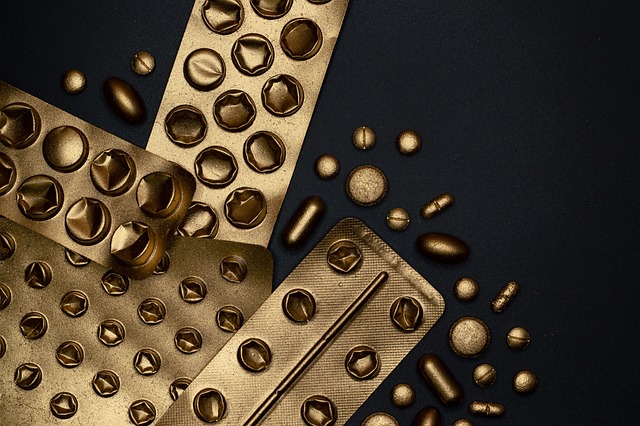TL;DR:
Cold therapy, including ice packs, cold water immersion, and cryotherapy, is an effective and accessible solution for migraine relief. These methods cool the body, constrict blood vessels, reduce inflammation, and numb pain receptors, alleviating symptoms like throbbing, nausea, sensitivity, and visual disturbances. Regular use can prevent migraines by decreasing neural sensitivity and promoting better blood flow. Best practices include wrapping ice packs, limiting sessions to 20 minutes, and leaving intervals for rewarming. Individuals with circulation issues should proceed with caution. Key SEO keywords: cold therapy for migraines, ice pack migraine relief, benefits of cold compress for headaches.
Suffering from migraines? Explore the power of cold therapy as a natural and effective remedy. This comprehensive guide delves into how techniques like ice packs, advanced cryotherapies, and cold water immersions can provide swift and lasting migraine relief. Discover the science behind these methods, their numerous benefits, and essential precautions to ensure safe and optimal results. Take control of your headaches with these innovative cooling techniques.
Understanding Migraines and Cold Therapy
Migraines are intense and debilitating headaches that can significantly impact daily life. They are characterized by throbbing pain, often on one side of the head, and may be accompanied by nausea, sensitivity to light and sound, and even visual disturbances. While the exact causes of migraines remain largely unknown, it’s understood that they involve a complex interplay of genetic, environmental, and neurological factors.
Cold therapy has emerged as a promising approach to alleviating migraine symptoms. Techniques such as applying an ice pack to the head or neck, undergoing cold water immersion, or even using cryotherapy chambers offer potential benefits for migraine relief. The cooling effect of these methods helps constrict blood vessels, reducing inflammation and pain signals sent to the brain. Additionally, cold therapy can induce a calming effect, promoting relaxation and helping to counteract the stress and anxiety that often accompany migraines.
Ice Packs: A Simple yet Effective Remedy
Ice packs are a simple yet effective remedy for relieving migraine symptoms through cold therapy. The application of ice directly to the affected area can significantly reduce inflammation and constrict blood vessels, which helps to lessen the intensity and frequency of migraines. By using an ice pack or a cold compress, you can achieve fast relief from throbbing headaches and associated symptoms like nausea and light sensitivity.
Cold therapy for migraines, including techniques such as cryotherapy and cold water immersion, offers numerous benefits. The cold temperature acts as a natural analgesic, numbing the pain receptors and reducing nerve transmission. This can help to calm the brain activity that triggers migraines. Additionally, cooling techniques can promote relaxation, lower blood pressure, and reduce muscle tension, all of which contribute to overall migraine pain relief.
Advanced Cold Therapy Techniques
In recent years, advanced cold therapy techniques have emerged as powerful tools in managing and relieving migraine symptoms. Beyond traditional ice packs, individuals are now exploring innovative methods such as cryotherapy—involving extreme cold exposure—and cold water immersion to combat these debilitating headaches. These cutting-edge approaches harness the body’s natural response to cold temperatures to reduce inflammation and constrict blood vessels, which can significantly lessen migraine pain and associated symptoms like nausea and sensitivity to light or sound.
One of the key benefits of integrating these advanced cooling techniques into migraine care is their convenience and accessibility. An ice pack, for instance, can be easily applied at home, offering immediate relief when a migraine strikes. Similarly, cold water immersion—whether through full-body baths or localized treatments—can provide profound relaxation and pain reduction. By combining these practices with traditional migraine management strategies, individuals may achieve more comprehensive and lasting relief from their symptoms, enhancing overall quality of life.
Benefits, Precautions, and Best Practices
Benefits of Cold Therapy for Migraines
Cold therapy for migraines is a simple yet powerful tool that can offer significant relief. Techniques like applying an ice pack, cold water immersion, or using cryotherapy chambers have been shown to reduce inflammation and constrict blood vessels, which are key factors in migraine pain. The cold temperature acts as a natural analgesic, numbing the nerve endings and lessening the sensation of pain. Regular use of these cooling techniques can help prevent migraines from occurring by reducing neural sensitivity and promoting better blood flow.
Precautions and Best Practices
While cold therapy for migraines is safe for most people, it’s essential to practice caution. Direct contact with extremely cold substances should be avoided to prevent skin irritation or frostbite. It’s recommended to wrap ice packs or use cold compresses in a thin towel before applying them to the head or neck. The duration of cold therapy sessions should not exceed 20 minutes at a time, and it’s crucial to leave an interval for the body to rewarm afterward. For individuals with Raynaud’s disease or circulation issues, cryotherapy for migraines should be approached with extra care and preferably under professional guidance.
Cold therapy offers a natural and effective way to alleviate migraine symptoms, providing an accessible solution for those suffering from this debilitating condition. By utilizing ice packs and exploring advanced techniques like cryotherapy and cold water immersion, individuals can find rapid relief and reduce the intensity of their migraines. Incorporating these cooling treatments into their self-care routines can significantly improve quality of life, offering a simple yet powerful tool to manage and prevent future attacks. Remember, when it comes to migraine pain relief with cold therapy, patience and consistency are key while enjoying the many benefits of this ancient practice.
